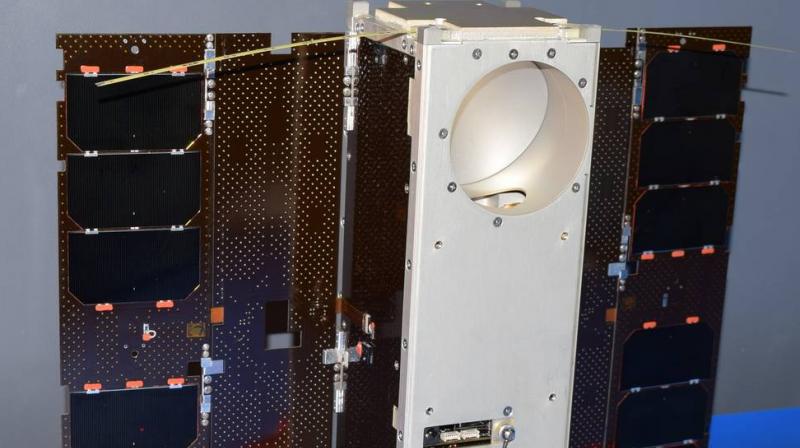NASA 'CubeSat' to test Miniaturized Weather Satellite tech
Government agencies depend on observations from weather satellites to inform forecast models that helps prepare for approaching storms.

Behind every weather forecast—from your local, five-day prediction to a late-breaking hurricane track update—are the satellites that make them possible. Government agencies depend on observations from weather satellites to inform forecast models that help us prepare for approaching storms and identify areas that need evacuating or emergency first responders.
Weather satellites have traditionally been large, both in the effort needed to build them and in actual size. They can take several years to build and can be as big as a small school bus. But all of that could change in the future with the help of a shoebox-sized satellite that will start orbiting Earth later this month.
The NASA-funded CubeSat, called Microwave Radiometer Technology Acceleration (MiRaTA), will be launched into Earth’s orbit from the rocket carrying the next big US weather satellite (NOAA's JPSS-1) into space. MiRaTA is designed to demonstrate that a small satellite can carry instrument technology that’s capable of reducing the cost and size of future weather satellites and has the potential to routinely collect reliable weather data.
Microwave radiometers are one of the workhorse instruments aboard today’s weather satellites. These sensitive instruments measure radio frequency signals related to the thermal radiation emitted by atmospheric gases, such as molecular oxygen and water vapour, and also detect particles such as cloud ice. These data are key inputs for models that track storms and other weather events. Calibrating these radiometers is important for keeping them from drifting so their data can be used for accurate weather and climate models. Therefore, a calibration target is usually included in the satellite to help the radiometer maintain its accuracy.
Miniaturizing microwave radiometer instruments to fit on a CubeSat leads to the challenge of finding a calibration instrument that is not only accurate but also compact, said Kerri Cahoy, principal investigator for MiRaTA and an associate professor in the Department of Aeronautics and Astronautics at the Massachusetts Institute of Technology. “You don’t have room for the bulky calibration targets that you would normally use on larger satellites,” Cahoy said. “Microwave radiometer calibration targets on larger satellites can be the size of a toaster, but for CubeSats, it would have to be the size of a deck of cards.”
Cahoy and her colleague William Blackwell, the microwave radiometer instrument lead at MIT Lincoln Laboratory, have come up with a solution based on a technique she studied in graduate school called radio occultation (RO), whereby radio signals received from GPS satellites in a higher orbit are used to measure the temperature of the same volume of atmosphere that the radiometer is viewing. The GPS-RO temperature measurement can then be used for calibrating the radiometer.
Small satellites such as CubeSats are playing an increasingly larger role in exploration, technology demonstration, scientific research and educational investigations at NASA, including — planetary space exploration; Earth observations; fundamental Earth and space science; and developing precursor science instruments like cutting-edge laser communications, satellite-to-satellite communications and autonomous movement capabilities.

